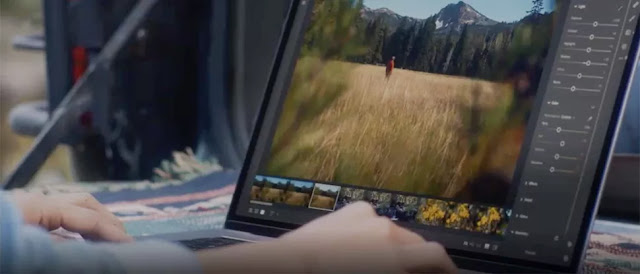The Upgrade Cascade Revisited
Last week I updated my studio computer. I ran headlong into the Upgrade Cascade and didn't have a choice. I couldn't install updates to Lightroom because it no longer supported the OS version my laptop was running. And my laptop didn't meet minimum requirements for the latest version of the OS. Lightroom is part of Adobe's photography subscription package so I was throwing money down the drain on updates I couldn't install. It was time. Still, I got 8 years out of the old one, which is great as far as I'm concerned.
I haven't yet sorted out everything that will be affected by the Upgrade Cascade. This computer is also running my music recording software, so it could be considerable. Because it's so rare that I do a major upgrade like this, I tend to want to go ahead and get the latest version of everything I use, which makes the Cascade worse. So I expect to be updating almost every piece of software I'm using. But there will only be a couple of things that I'll replace with entirely different products. Definitely my online backup service, and maybe a few Photoshop and VST plug-ins.
The new laptop is blazingly fast compared to the old one, but it's decidedly mid-tier relative to what's available on the market. I did get quite a bit of RAM and storage space to deal with photography, audio, and video. But there's a limit to how much I'm willing to spend on expensive hobby gear that becomes obsolete quickly. If it were for work, or if it could last a lifetime, that would be different. But for this sort of thing, I tend to be a value shopper (but not a bargain shopper – there's a big difference!).
Buying a new laptop meant getting up to speed on current technology. As expected, things have changed a lot in 8 years. All of them for the better, which isn't necessarily expected.
- Multicore processors are minimum requirement. I'm not sure they even make single core computers anymore. This not surprising and a very good thing. As a former professional programmer, I can tell you it does make programming and the OS considerably more complicated, but it's worth it.
- SDDs are now standard. HDDs only come on the cheapest low-end computers. SDDs were available in 2014 when I bought my last laptop but they were typically only on the higher end models. After having SDD on my last two laptops for work, I'm a believer.
- M.2 has replaced mSATA as the standard for onboard storage. I had to research what exactly M.2 and the associated technologies are and I like what I learned. I love the standard because it's very compact and the latest versions are incredibly fast.
- Power via USB PD is now standard. Love this change. Chargers are now cheaper, smaller, faster, and universally compatible with each other.
- USB-C is becoming standard. It hasn't completely replaced USB-A because there are just too many USB-A devices still in service, but it's definitely moving that direction. Overall this is a good trend for a variety of reasons – speed, power delivery, universality of the interface, symmetrical connectors, etc. But having had a work laptop with only USB-C ports before (2018 MacBook Pro), it's a hassle until USB-A devices have mostly been eliminated too.
- Ethernet and memory card ports are rare. This might be occasionally inconvenient but it makes sense. Although it’s faster, wired networking is a hassle and I doubt many people are doing it anymore. Similarly, while I still need an SD card port, they are not widely needed since smartphones replaced digital cameras. There are USB adapters for people like me who need them, and that’s good enough.
- Laptops have mostly moved away from 16:9 displays and toward taller formats (3:2, 16:10), enabling more real estate vertically. There are still some laggards (like the laptop I bought), but they’re getting rare. I like this change a lot. Ironically, there was a period where taller ratios were considered antiquated, but I think people came to their senses and discovered that what works well for watching movies isn't necessarily a good thing for doing work on a computer. This is the one modern touch that my new laptop doesn't have that I wish it did. It's not a huge deal though because I rely more on external displays.
- Oddly, RAM requirements haven't gone up too much. It's higher, but not as much as I'd expect.
- Prices haven't gone up by much. You don't pay a whole lot more for a mid-range laptop in 2022 than you did in 2014 (as I recall). It was undoubtedly worse during the heart of the pandemic.
Here's hoping that I get 8 years out of this laptop! If so, I'll be very satisfied.

Comments
Post a Comment